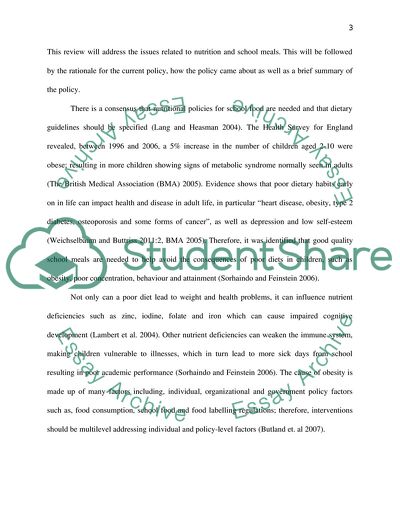Cite this document
(School Food Standards Research Proposal Example | Topics and Well Written Essays - 3000 words, n.d.)
School Food Standards Research Proposal Example | Topics and Well Written Essays - 3000 words. Retrieved from https://studentshare.org/education/1865581-school-food-standards-a-summary-of-the-nutrition-issue-the-current-policy-and-how-it-was-developed-and-by-whom-and-an-evaluation-of-its-effectiveness-with-recommendations-for-future-policy-development
School Food Standards Research Proposal Example | Topics and Well Written Essays - 3000 words. Retrieved from https://studentshare.org/education/1865581-school-food-standards-a-summary-of-the-nutrition-issue-the-current-policy-and-how-it-was-developed-and-by-whom-and-an-evaluation-of-its-effectiveness-with-recommendations-for-future-policy-development
(School Food Standards Research Proposal Example | Topics and Well Written Essays - 3000 Words)
School Food Standards Research Proposal Example | Topics and Well Written Essays - 3000 Words. https://studentshare.org/education/1865581-school-food-standards-a-summary-of-the-nutrition-issue-the-current-policy-and-how-it-was-developed-and-by-whom-and-an-evaluation-of-its-effectiveness-with-recommendations-for-future-policy-development.
School Food Standards Research Proposal Example | Topics and Well Written Essays - 3000 Words. https://studentshare.org/education/1865581-school-food-standards-a-summary-of-the-nutrition-issue-the-current-policy-and-how-it-was-developed-and-by-whom-and-an-evaluation-of-its-effectiveness-with-recommendations-for-future-policy-development.
“School Food Standards Research Proposal Example | Topics and Well Written Essays - 3000 Words”, n.d. https://studentshare.org/education/1865581-school-food-standards-a-summary-of-the-nutrition-issue-the-current-policy-and-how-it-was-developed-and-by-whom-and-an-evaluation-of-its-effectiveness-with-recommendations-for-future-policy-development.


